Stock indices ended a choppy week right on their lows
The major American stock indices are down ~2.5% from their All-Time Highs, with the S+P closing Friday just a hair under the 50 DMA, for only the 3rd time since the Pfizer vaccine announcement on November 9, 2020. Is it time to Buy The Dip – or is this The Big One?
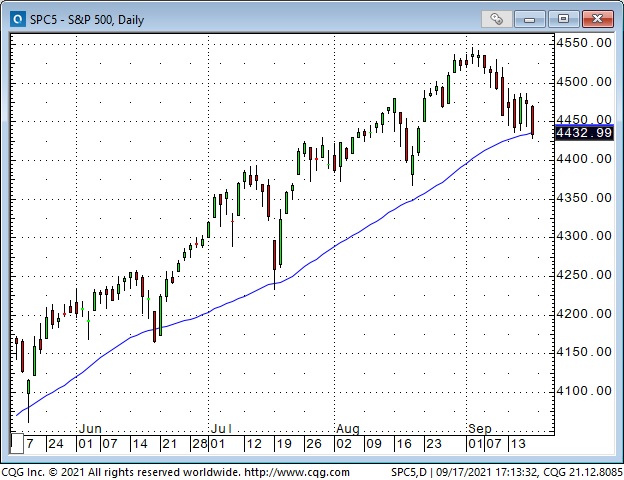
This year the public has noticed that the stock market is rising and they have decided to get in. In a big way. They have also discovered that you can make more money in a rising market by borrowing money to buy even more stock.
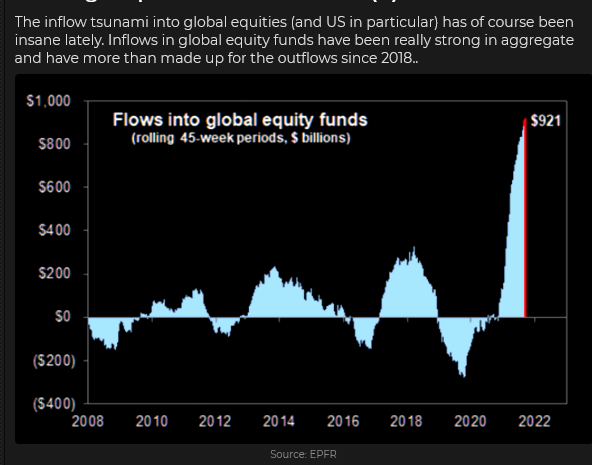

The US Dollar rallied as stock indices fell
In my recent blogs, I’ve expected that “summer complacency” would be replaced by “stress” as we moved into the fall. When Mr. Market feels stressed, he likes the US Dollar. The US Dollar Index closed this week at its 2nd highest weekly close since the Federal election last November.
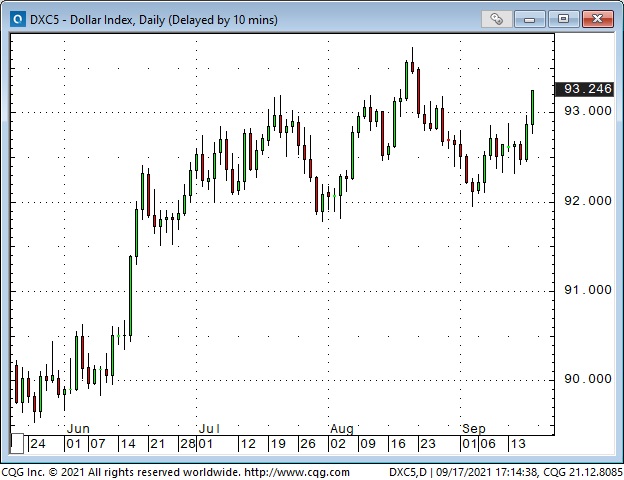
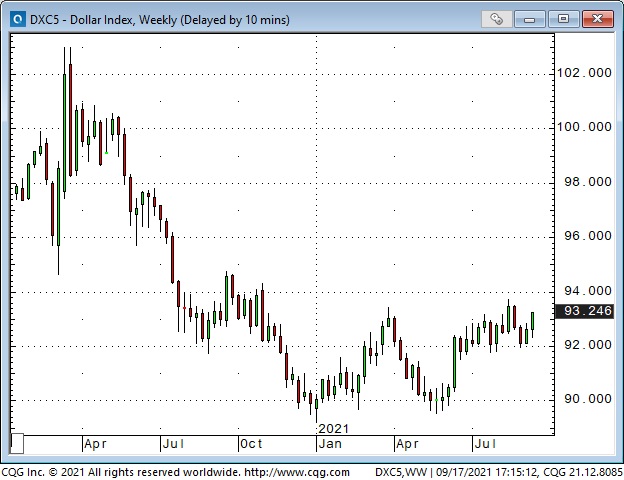
Gold usually struggles when the US Dollar rallies
Gold is down ~$90 the past two weeks, down ~$175 (9%) from its June highs. GDX, the gold miners ETF, closed this week at a 17 month low. Silver has fallen ~$6 (21%) from its June highs and closed this week at a 14 month low.
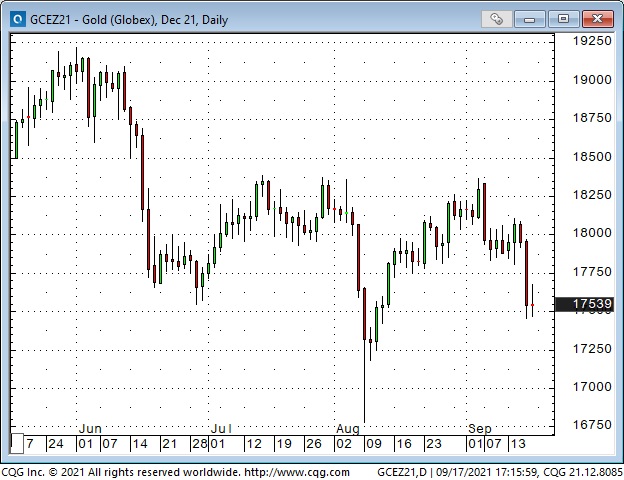
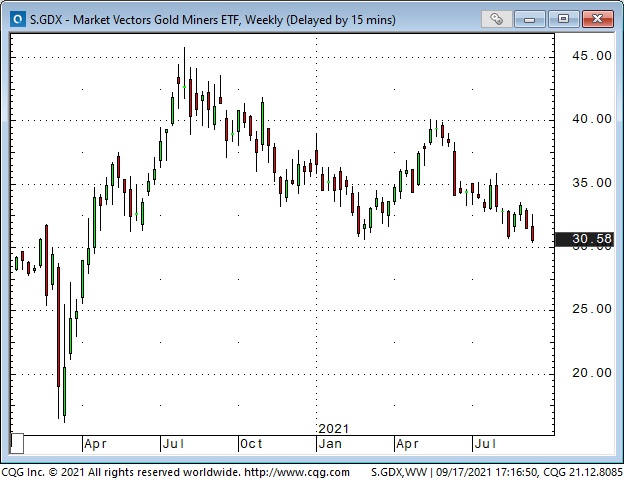
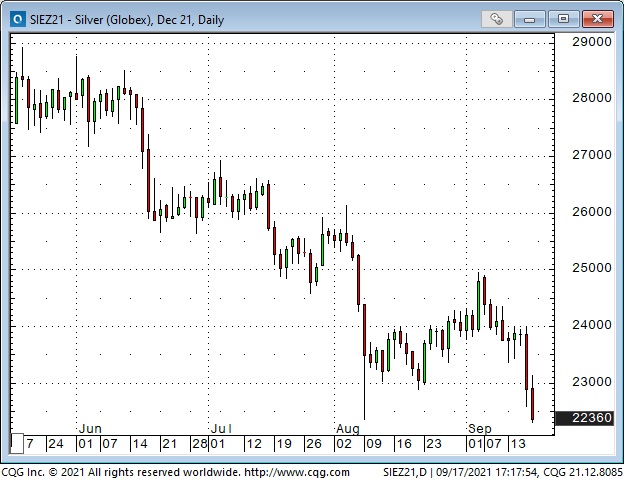
The Canadian Dollar fell as the US Dollar rallied
The CAD had a choppy week, with intra-day trading almost step-for-step with the S+P, but with the US Dollar rallying and the stock market trending lower the Looney closed the week at a one-month low. Without the CRBC commodity index at 6-year highs on strong energy markets, the CAD would likely have been much lower this week.
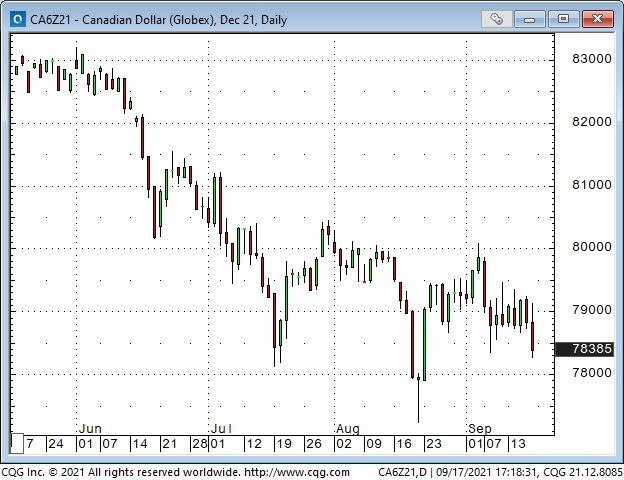
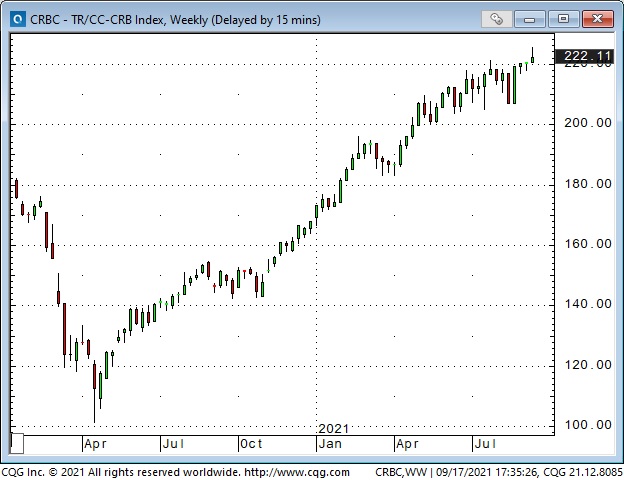
Energy markets – up, up and away
WTI crude oil has rallied ~$10 from the August 19 Key Turn Date but has not traded above its early July highs. Gasoline and heating oil have rallied above the July highs on refinery outages. Goldman Sacs is forecasting WTI over $80 in Q4/21 on the expectation of OECD stocks hitting 6-year lows. They also expect steep backwardation in the WTI market. Other people have different ideas.
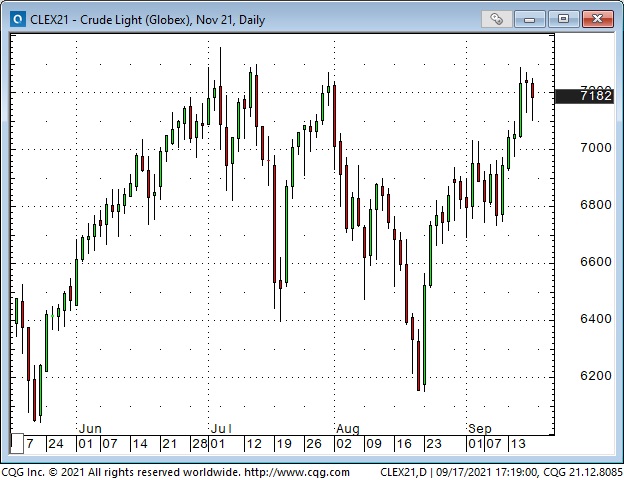
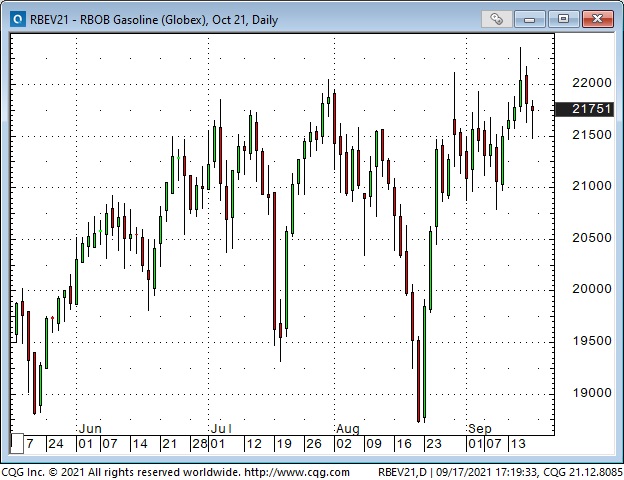
New York NatGas futures surged ~50% from their August lows to this week’s highs.
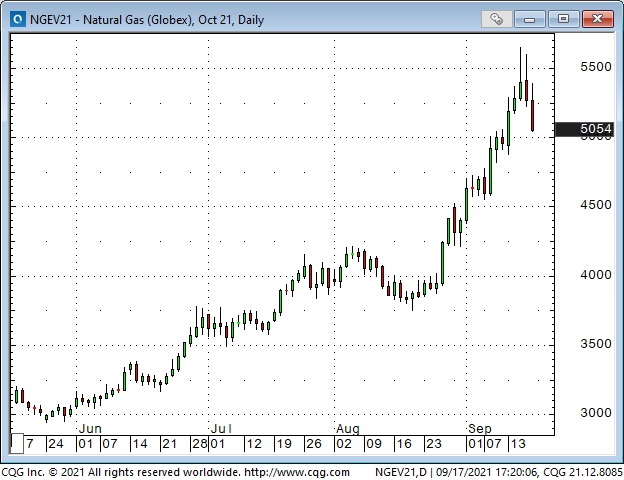
United Kingdom NatGas nearly doubled from their August lows to this week’s highs. Electricity prices in Europe hit record highs.
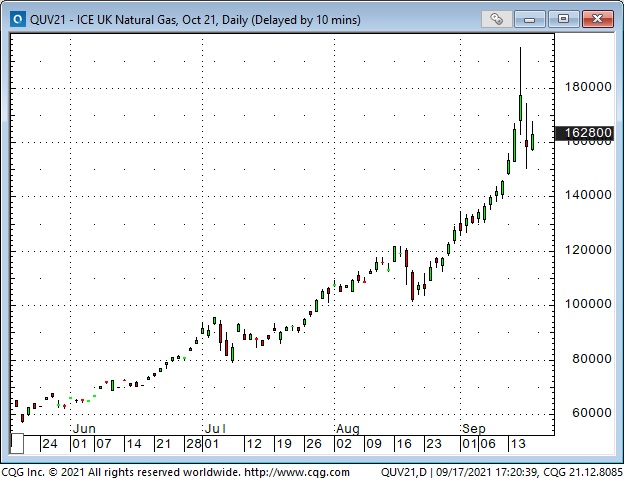
Various uranium markets jumped 60 – 70% from their August lows to this week’s highs.
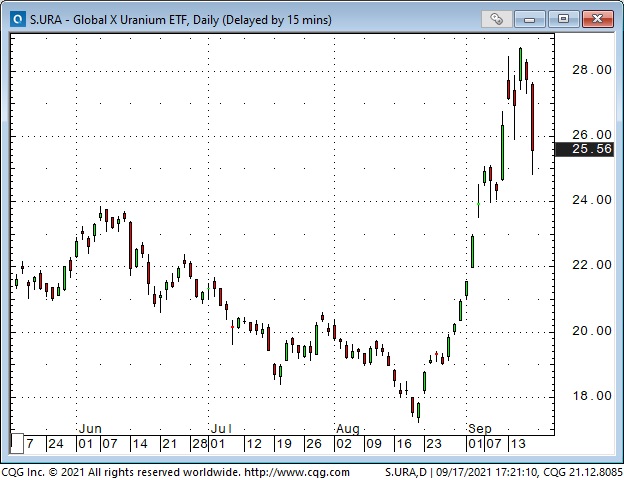
Bond prices fell this week – despite weakness in stocks
It’s not unusual to see bonds catch a bid when the stock market wobbles – but not this week – the 10-year Treasury briefly touched a 2-month low on Friday.
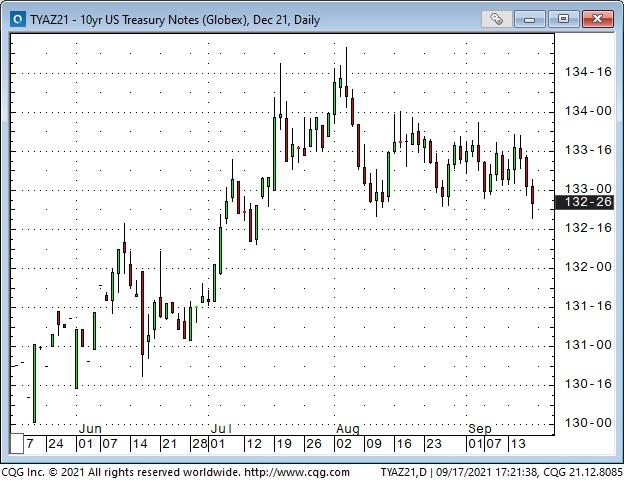
Maybe the most important chart in the world
If you had to find one chart that explained why asset prices have been trending higher for the last 40 years you might pick this one. 10-year Treasury yields were ~15% in 1981 – today they are ~1.5%.

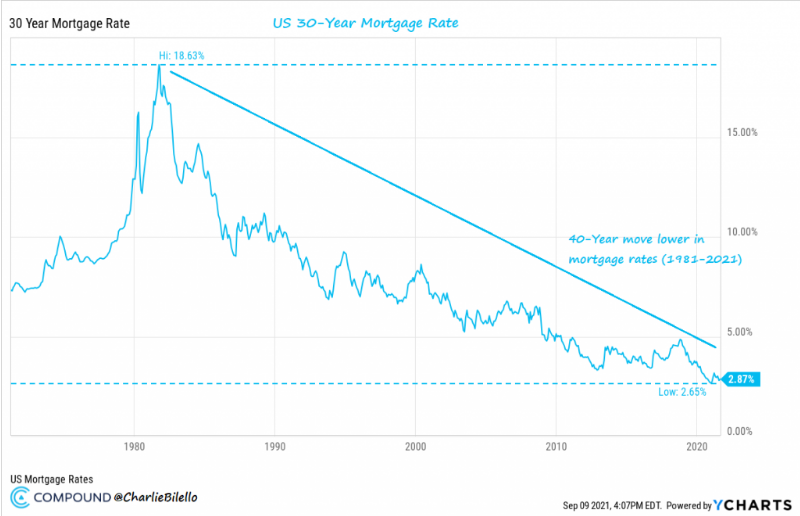
China
In several recent blogs, I’ve questioned whether the severe weakness in Chinese tech shares would be the catalyst for a tumble in the (tech-heavy) American markets. In August, the answer appeared to be “No,” but now that the “stress” of September has arrived the answer might be, “Yes, but with a delay.”
Evergrande, the HUGE Chinese real estate developer has a $300 billion debt problem (their bonds are trading for dimes on the dollar) and some folks are talking about Evergrande as China’s Lehman. The Hong Kong property market is not amused.
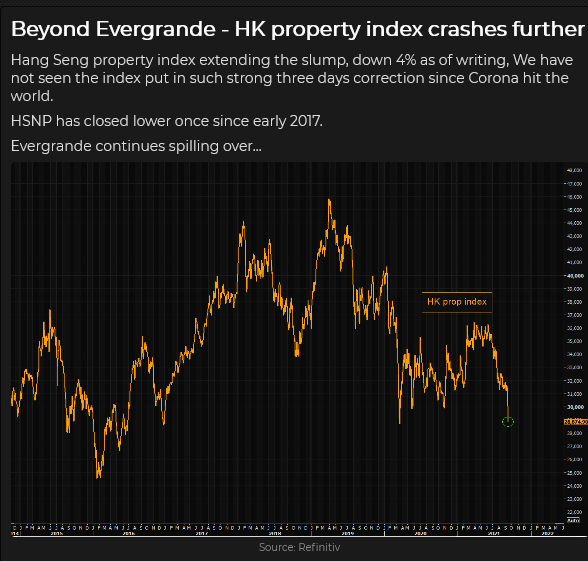
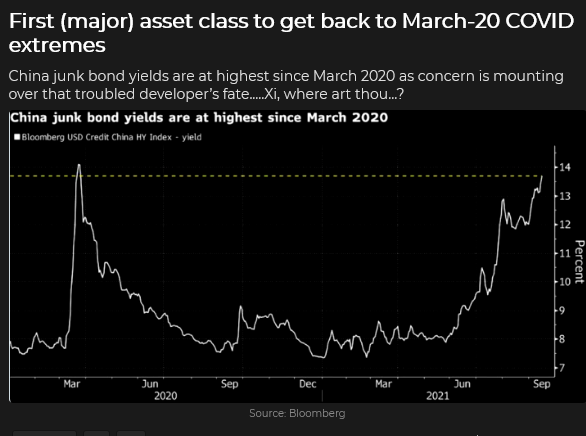
My short term trading
I started the week with a clean slate. Stock indices had closed on their lows the previous week and I thought that if the selling didn’t follow through into this week that the markets might bounce. I also decided to experiment with trading off nothing but the intra-day price action.
I bought and shorted the Dow and/or the S+P a few times with the net result that my P+L was down ~0.5% on the week – I gave back about a third of last week’s gains.
My “big miss” on the week was not getting short the stock indices on Friday. I had bought the S+P Thursday morning as it rallied back from its early lows, and held the position overnight. The market looked like it could make new highs for the week. But Friday’s day session started with a quick leg down, I was stopped for a small loss and I couldn’t get “turned around” to get short.
My problem was different time horizons. I’ve been expecting a downturn to develop in September after the complacent summer – which would be a Swing trading time frame of a few days to a few weeks – but I was experimenting with some intra-day trading and, “Didn’t see the forest for the trees!” Trading is not a game of perfect.
My redeeming trade this week (so far) was shorting the CAD on Friday. (The trade is actually a covered write – I sold the futures around 7875 and sold 7825 puts for 20 ticks. The puts expire next Friday. Delta 35%, IV 9.25% when I sold them.) My short CAD position may benefit from weaker stocks and crude oil and a stronger USD.
On my radar
Mr. Market has gone from summer complacency to “somewhat stressed” in early September (a 2.5% drawdown from ATH is not a REAL crisis!) The 2nd half of September has historically been a weaker time of the year for equities but the very quick shift in sentiment from bullish to bearish may have jumped the gun. If the stress intensifies I’ll be looking for stocks down, and USD up. If stocks catch a bid the BTD crowd may jump in and drive stocks higher.
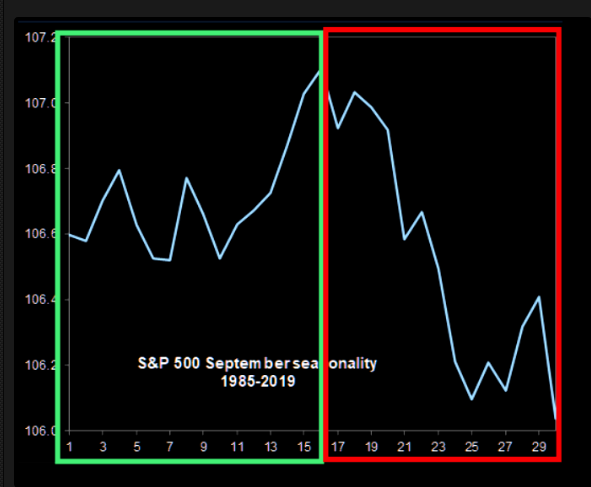
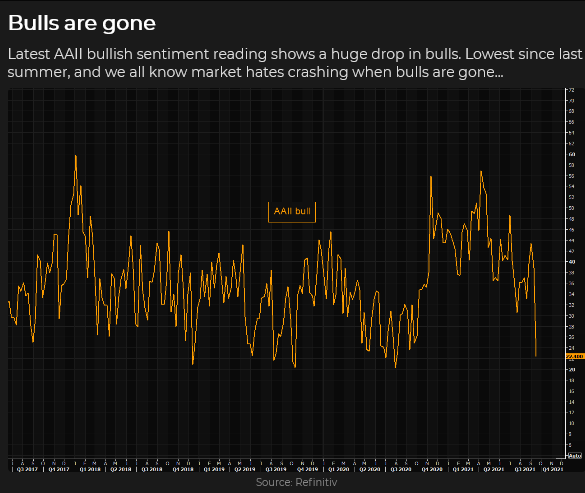
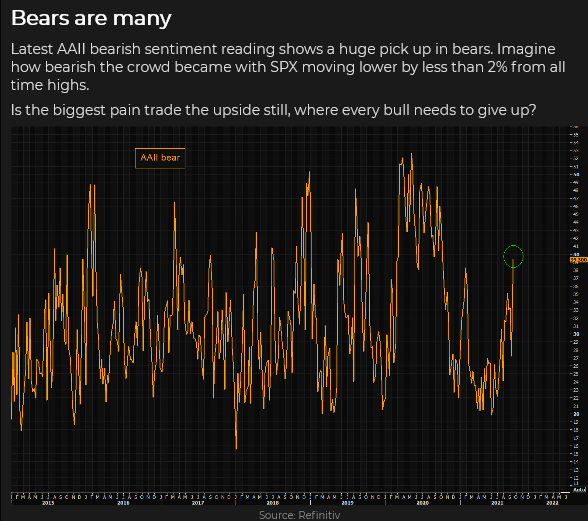
A lot of options expired on Friday – quad witching. I’ve read commentary which suggests this expiry could “free up” the market to make bigger moves.
The FOMC meeting this coming week may (or may not) give the market a jolt if there are any indications of policy changes. (And, speaking of the Fed, Biden will likely announce whether or not he is going to re-appoint Powell within the next few weeks. If Powell isn’t reappointed then expect an even more dovish FED – which would probably be bullish for stocks and gold, bearish for the USD.)
Within a short-term time frame, the bond market is an enigma – trading lower as stocks fell. It was also puzzling to see the haven currencies, YEN and Swisse trading lower as stocks fell. I guess the USD was just that strong.
On a longer-term time frame, when I see a chart that looks like this I usually think that sooner or later it will look like the second chart.
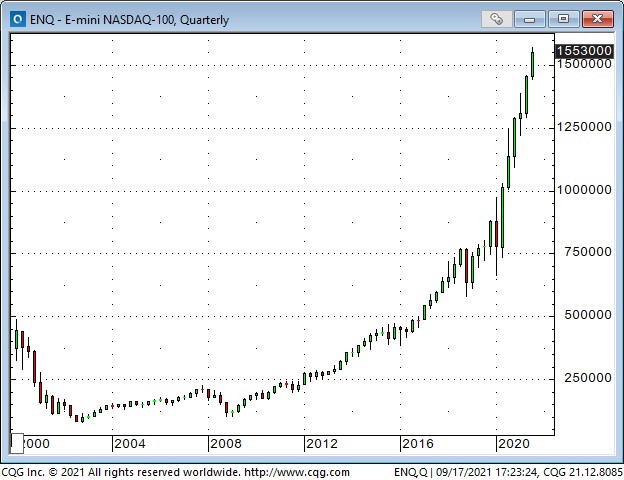
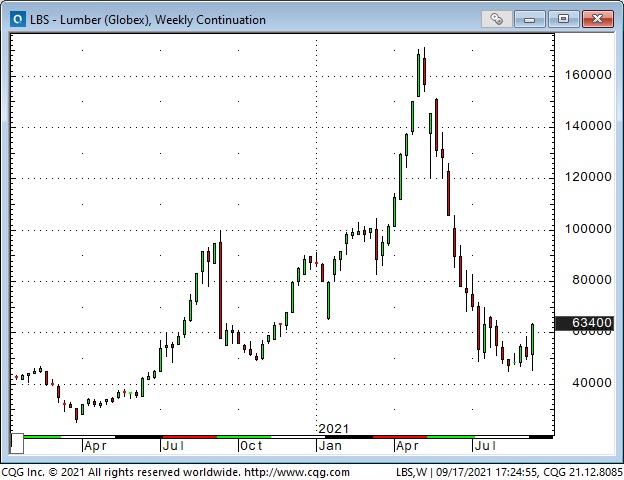
Thoughts on trading
I usually think of “managing risk” as “avoid taking a big loss.” In practical terms, for my short-term trading, I don’t want to lose more than 1% of my trading capital on any one trade. When I see a trade I’d like to make the first thought I have is, “Where would I be wrong? Where would I have to exit the trade and how much would that cost?” If the correct stop-out point would cost me more than 1% of trading capital, I (usually) won’t make the trade.
For example, let’s say I’m bearish the S+P. Could I sell it “in the hole” as it was closing Friday? (Some people like to sell new lows and buy new highs, and for some people that works really well.) That would be a hard trade for me. If I had been long, and the trade was underwater, I would sell it to avoid the possibility of a greater loss – but it would be hard to initiate a new short position because I would have to allow for some “bounce back” next week before I threw in the towel. How much? I don’t know. I would certainly have to cover a new short if the market rallied back above Friday’s opening range. That would be about a 50 point loss, or $2,500 per Emini contract.
If I just “had to be short – in case this was the trade of the century,” I could buy an OTM put – but puts have been bid aggressively, VOLS have jumped and if the S+P rallied any value in the puts would evaporate in a heartbeat (and I would be guilty of dumb FOMO – hard to forgive myself for that!)
So – I like to put on a trade close to where I know I’m wrong on the trade – close to the spot where I will stop myself out. I’ll get a lot of small losses, but if the trade goes my way the gains will be WAY bigger than the losses.
Subscribe: You have free access to everything on this site. Subscribers receive an email alert when I post something new – usually 4 to 6 times a month.
Victor Adair retired from the Canadian brokerage business in 2020 after 44 years and is no longer licensed to provide investment advice. Therefore, this blog, and everything else on this website, is not intended to be investment advice for anyone about anything.




